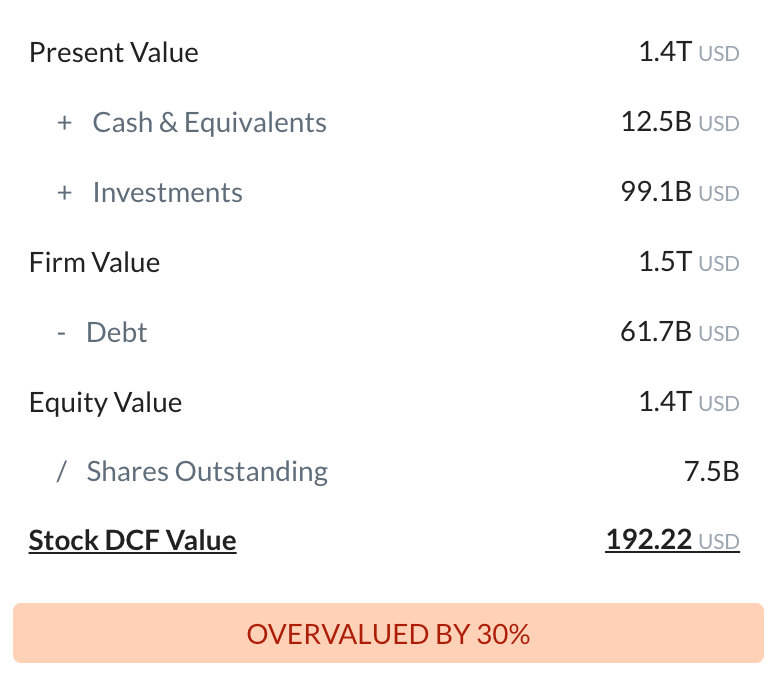
Union Pacific Corp
NYSE:UNP

Intrinsic Value
The intrinsic value of one
 UNP
stock under the Base Case scenario is
190.44
USD.
Compared to the current market price of 220.26 USD,
Union Pacific Corp
is
Overvalued by 14%.
UNP
stock under the Base Case scenario is
190.44
USD.
Compared to the current market price of 220.26 USD,
Union Pacific Corp
is
Overvalued by 14%.
The Intrinsic Value is calculated as the average of DCF and Relative values:

Valuation History
Union Pacific Corp

Fundamental Analysis

Union Pacific’s heavy reliance on industrial demand and bulk commodities leaves it vulnerable to potential economic downturns, leading to sizable drops in shipment volumes and pricing power.
Union Pacific’s extensive network spanning the western two-thirds of the U.S. provides significant competitive advantages in terms of market reach and pricing power, enabling robust profitability despite cyclical pressures.

Revenue & Expenses Breakdown
Union Pacific Corp

Balance Sheet Decomposition
Union Pacific Corp

| Current Assets | 4B |
| Cash & Short-Term Investments | 1B |
| Receivables | 1.9B |
| Other Current Assets | 1.1B |
| Non-Current Assets | 63.7B |
| Long-Term Investments | 2.7B |
| PP&E | 59.6B |
| Other Non-Current Assets | 1.4B |
Free Cash Flow Analysis
Union Pacific Corp

| USD | |
| Free Cash Flow | USD |
Earnings Waterfall
Union Pacific Corp

|
Revenue
|
24.3B
USD
|
|
Cost of Revenue
|
-5B
USD
|
|
Gross Profit
|
19.3B
USD
|
|
Operating Expenses
|
-9.5B
USD
|
|
Operating Income
|
9.7B
USD
|
|
Other Expenses
|
-3B
USD
|
|
Net Income
|
6.7B
USD
|
UNP Profitability Score
Profitability Due Diligence

Union Pacific Corp's profitability score is 72/100. The higher the profitability score, the more profitable the company is.

Score
Union Pacific Corp's profitability score is 72/100. The higher the profitability score, the more profitable the company is.
UNP Solvency Score
Solvency Due Diligence

Union Pacific Corp's solvency score is 43/100. The higher the solvency score, the more solvent the company is.

Score
Union Pacific Corp's solvency score is 43/100. The higher the solvency score, the more solvent the company is.
Wall St
Price Targets
UNP Price Targets Summary
Union Pacific Corp

According to Wall Street analysts, the average 1-year price target for
 UNP
is 269.06 USD
with a low forecast of 202 USD and a high forecast of 309.75 USD.
UNP
is 269.06 USD
with a low forecast of 202 USD and a high forecast of 309.75 USD.
Dividends
Current shareholder yield for  UNP is
.
UNP is
.
Shareholder yield represents the total return a company provides to its shareholders, calculated as the sum of dividend yield, buyback yield, and debt paydown yield. What is shareholder yield?
The intrinsic value of one
 UNP
stock under the Base Case scenario is
190.44
USD.
UNP
stock under the Base Case scenario is
190.44
USD.
Compared to the current market price of 220.26 USD,
 Union Pacific Corp
is
Overvalued by 14%.
Union Pacific Corp
is
Overvalued by 14%.






















































 You don't have any saved screeners yet
You don't have any saved screeners yet